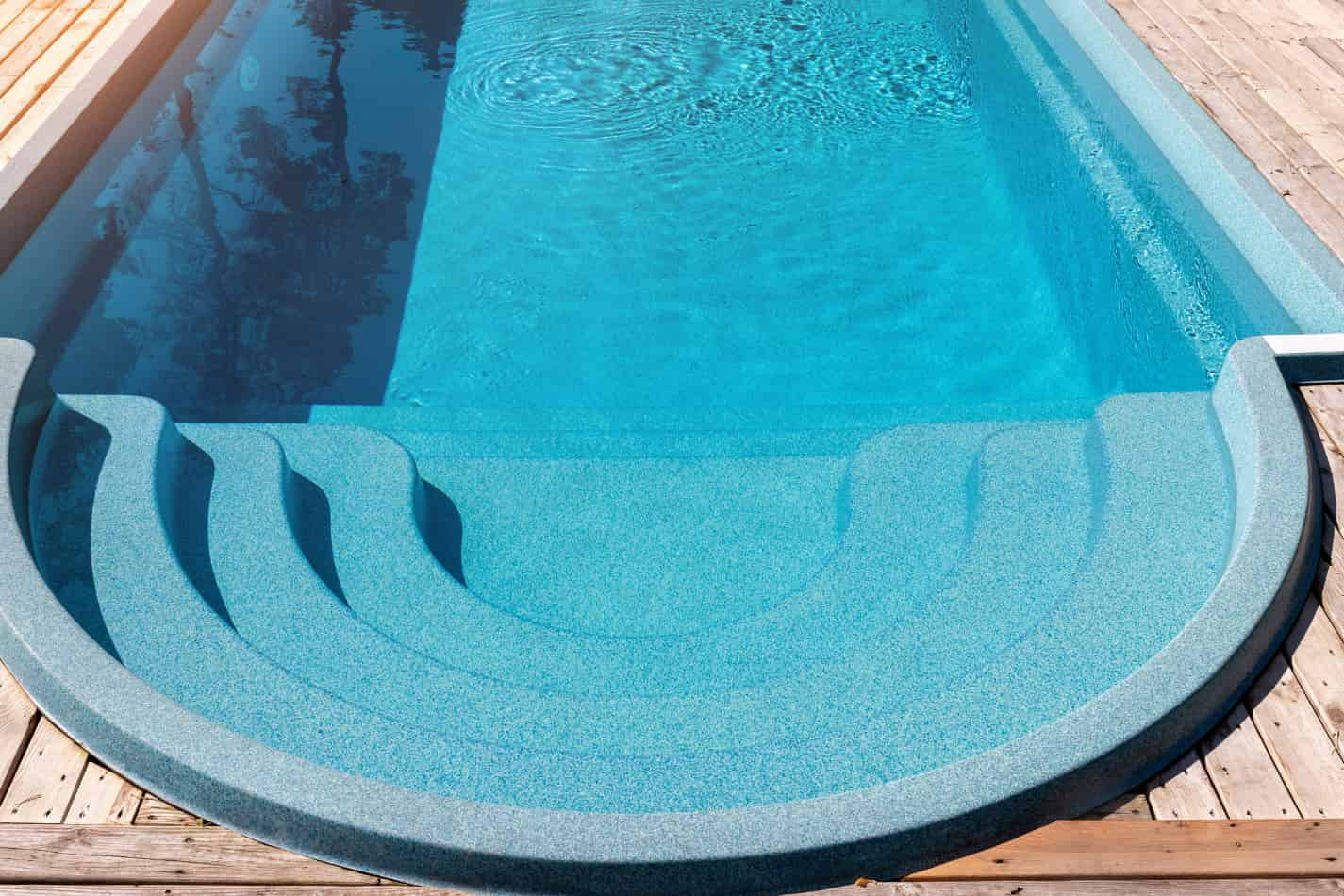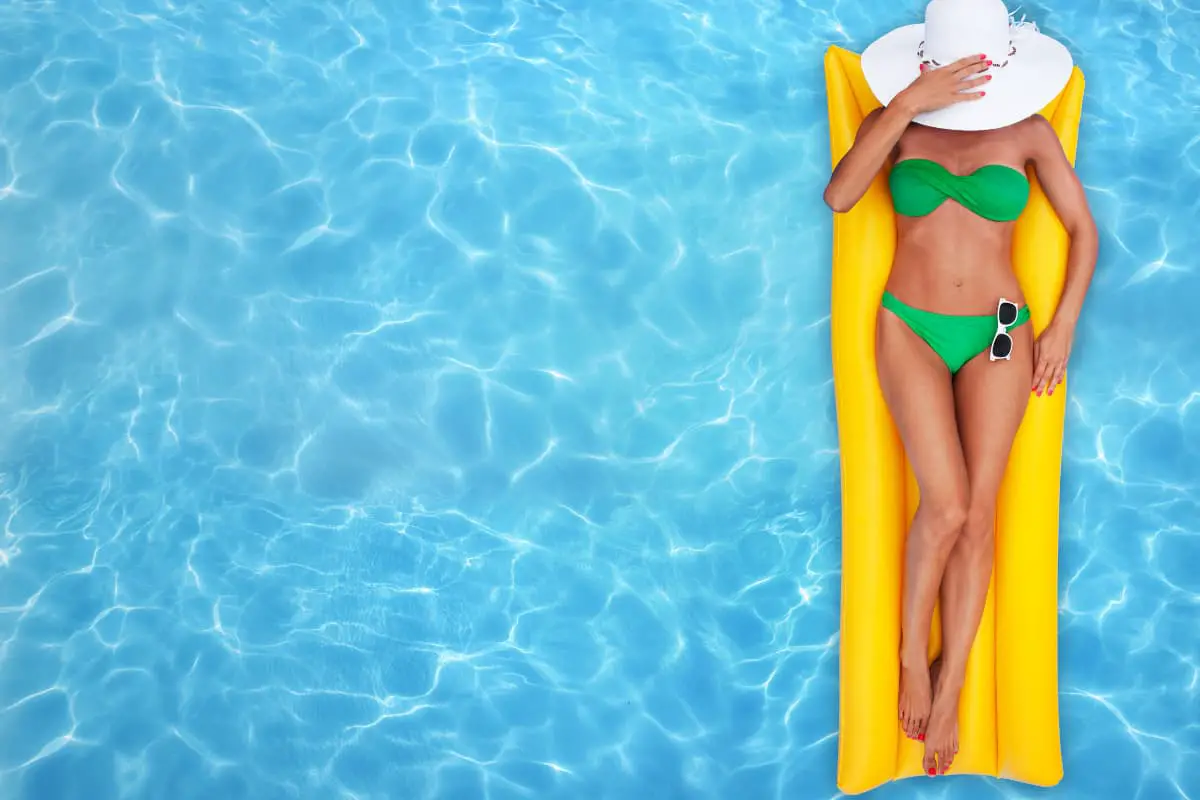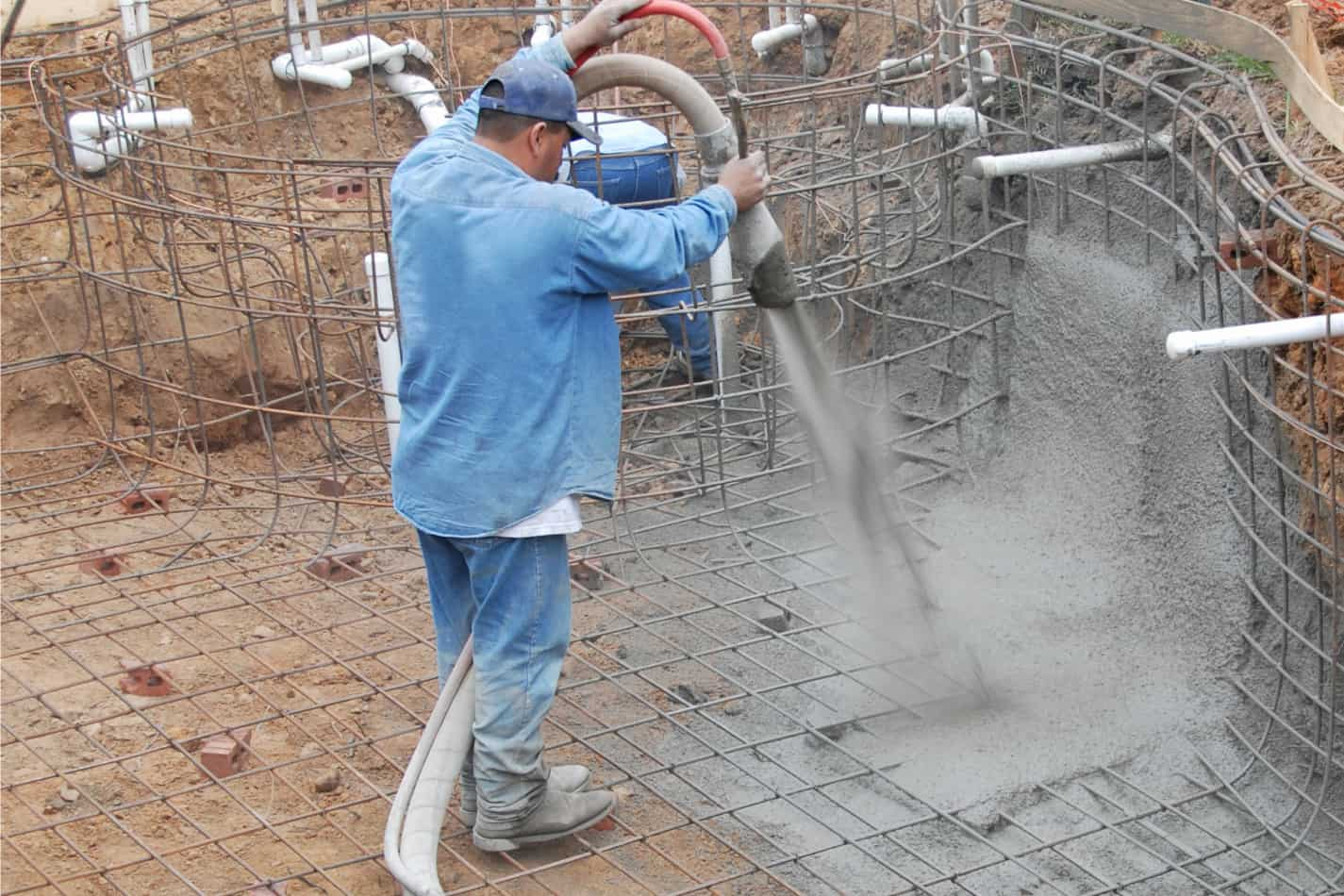Fiberglass Pool: Impact and Advantages to Adding Heat

As an Amazon Associate I earn from qualifying purchases.
Some pool owners enjoy diving into a cool pool after a long day at work. Others prefer a warm, soothing swim. The climate of a place will often influence preference. Regardless, it’s good to have the option of heating a pool no matter where you live. This begs the question, can you heat a fiberglass pool?
The answer is yes! Heating is not only an option for fiberglass pools, but it is also a great idea. Fiberglass pools are both simple to heat along with being the least expensive. Unlike vinyl or concrete, which have little ability to retain heat, fiberglass is an insulator; therefore, it keeps heat in your pool.
Also, Fiberglass pools heat up much faster and retain that heat for far longer than other types of pools. Thus heating a fiberglass pool is a fraction of the cost of heating a concrete or vinyl liner pool. This results in significant energy and financial savings.
Are you wondering whether you can heat your fiberglass pool in warmer climates? Maybe you don’t know the ideal temperature, options you should consider (minimize cost), or the associated impacts.
Whatever the case, relax and continue reading because this article has got you covered.
Learn How to Manage Your Pool and Hot Tub
Frustrated trying to keep your pool clear? Feeling confused about when to add the right chemicals? Get the perfect easy-to-use, illustrated ebook and video course today!
Is it necessary to heat in a warmer climate?
While it is entirely up to you whether or not to heat your pool, installing a heating system allows you to extend your swimming season. Consider the weather in your area, as well as the amount of extra swimming time you can obtain if you heat your pool.
What is the Ideal Temperature?
Before delving into the various heating methods, pool owners should be aware of temperature facts to assist them in discovering the ideal balance.
Most swimming instructors believe that 78 degrees Fahrenheit is adequate for competitive swimming and training workouts for intensive pool activities.
Families with young children or elderly grandparents, on the other hand, may want to raise the temperature closer to 80 degrees Fahrenheit for maximum pool comfort.
So how do you heat your fiberglass pool to attain your desired temperature? Read on to learn more.
Alternatives for Heating a Fiberglass Pool
Several factors influence the type of heating system you select.
When choosing pool heating, consider the size of your pool, the temperature in your location, the amount of money you have to spend, and how much you’re likely to use the pool during the year.
Also, your pool builder can advise you on the best solution for your specific needs. Options for heating fiberglass pool includes;
Electrical
For heating a fiberglass pool, many pool owners choose electrical heating. The pool pump incorporates a heating element in this type of setup.
Electrical heating systems are easy to install and use, but the prices can build up on your power bill.
Solar
Becoming increasingly popular in a variety of applications, including pool heating. Installing a solar heating system is typically more expensive than other solutions, but you will likely save money in the long run.
You should think about how many sunny days you generally have where you reside.
Solar heating panels are attached to the roof of your home if you pick this option. The panels generate heat, which is then used to heat the water directly.
A small pump circulates the water through the system, regularly recirculating the heated water into the pool.
Gas
You may be wondering if you can also heat your fiberglass pool with gas. Well! Yes, you can. Gas heating systems even function more swiftly. The disadvantage is that they are frequently more expensive to operate.
Nonetheless, if you dislike waiting for the pool to warm up and plan to turn the system off once the water is warm, this type of system could be ideal for you.
Ways to Heat Your Pool at a Low Cost
The time of day
If you have a heat pump for your pool, the time of day you run it significantly impacts its efficiency. Because heat pumps generate heat from the air, the optimal time to utilize them is when the weather is warmest.
The best method to accomplish this is to program your filtration system to run during the hottest part of the day.
Because your heat pump will only function when there is water flow, which is mostly generated by the filtration system, this will be a cost-effective solution to heat your pool.
As a result, the pool heater will activate when your filtration system activates. Your pool heater will perform optimally if your filtration is operating during the hottest part of the day.
Performance Coefficient (COP)
When purchasing a unit, it is critical to examine the Coefficient Of Performance, or COP. The COP is the heat pump’s efficiency rating; it is the ratio of energy output to energy input. In other words, the higher your heat pump’s COP rating, the more efficient it is.
When comparing different heat pumps, remember that the higher the COP, the more cost-effective. The percentage difference in COP ratings equals the percentage savings between the lower and higher-rated COP heaters.
Protecting Your Pool Environment from Wind
Wind at the pool’s surface causes ripples or little waves. Heat loss by evaporation is affected by water temperature, ambient temperature, humidity, and pool surface area. A flat, peaceful pool will have a water surface area equal to the pool’s actual size.
Ripples and waves in the pool increase the surface area of the water, accelerating evaporation losses. As a result, establishing a wind-protected pool habitat will go a long way toward lowering heating costs.
Pool Temperature Control
The higher the temperature of your pool water, the higher the expense. Each degree increase in temperature results in a 15-18% increase in operating costs. While an 88°F pool is nice and warm, it will cost much more to maintain than an 85°F pool.
When it comes to temperature, each user has their own “thermostat” and comfort level. It’s vital to note that the warmer the water, the less cost-effective.
Impacts and advantages of adding heating to fiberglass pool
Location
If your pool is in full, all-day sun and you utilize a solar cover, the water in your pool will most likely be fairly comfortable to swim in throughout the summer months.
However, if your pool is located in a shaded place, even scorching summer days may be insufficient to warm the water. In this situation, unless you prefer swimming in chilly water, a pool warmer is a must.
Weather
Even if your pool is in a very sunny location and you use a solar blanket constantly, there will be days — even in the summer — when your pool is too cool for you. Not every day is hot and humid, and on certain cooler, wet summer days, the temperature of your pool can fall well below 78°F.
A pool heater can also make swimming more comfortable after the sun goes down.
Duration of Use
If you’re only going to use your pool for two months a year, a heater might not be for you. On the other hand, a heater is a good investment if you want to get the most out of your pool.
You can easily swim from May until mid-October with a pool heater, giving you a full five months of pool use. That’s twice as much time as you’d get without one.
Learn How to Manage Your Pool and Hot Tub
Frustrated trying to keep your pool clear? Feeling confused about when to add the right chemicals? Get the perfect easy-to-use, illustrated ebook and video course today!
Conclusion
To conclude on whether or not you can heat your fiberglass pool, it’s important to note that the extent of heating relies on your location, the size, manufacturer, and quality of the glass pool you choose, your reason for heating, and much more.


